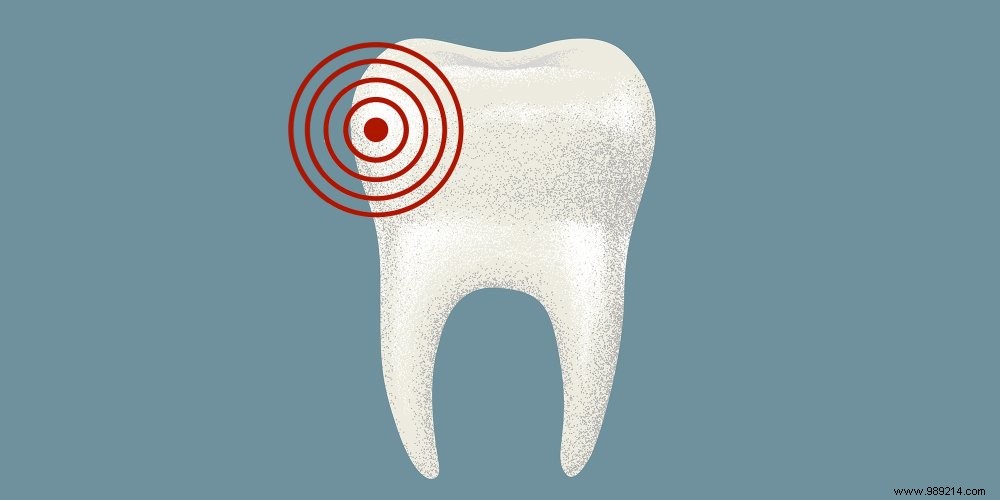 Unpleasant, painful or unbearable, persistent dental pain ruins our lives. Don't take them lightly. Untreated, they risk intensifying and causing serious damage in the mouth.
Unpleasant, painful or unbearable, persistent dental pain ruins our lives. Don't take them lightly. Untreated, they risk intensifying and causing serious damage in the mouth. Toothache can have many origins. The majority of them result from local infection or inflammation, but trauma (a cracked or fractured tooth) or erosion of the enamel can also be involved. Sinusitis or otitis is also likely to induce pain in the molars, as is bruxism (teeth grinding). It is better to consult a dental surgeon without delay in order to identify the source of the evil and to eradicate it as quickly as possible.
High sugar consumption and poor dental hygiene promote the proliferation of bacteria in the mouth that perforate tooth enamel. If the damage is not stopped in time, the cariogenic bacteria attack the dentin - the layer below - then reach the pulp where the nerves and blood vessels are nestled.
At this stage, the pulp may become necrotic and the pain is sharp. It is the famous toothache (or acute pulpitis) that prevents you from sleeping. Only the elimination of all the infected dental tissues, combined with taking antibiotics, can stop the infection and avoid complications.
A poorly treated dental infection, following a cavity, a dental fracture or a tooth that is struggling to come out, causes a purulent lesion that can be accompanied by fever and swollen glands. A build-up of tartar under the gumline or an aging crown, the patency of which is no longer intact, can also lead to the formation of an abscess.
This must be taken care of quickly (incision, drainage of the pus and asepsis of the dental canal) to avoid the destruction of the surrounding bone and the spread of the infection to the whole body.
Video of the day:"Almost one in two adults has gingivitis, a pathology of the supporting tissues of the teeth, the periodontium", notes Dr Corinne Lallam, dental surgeon. Following the excess of tartar produced by the hardening of the dental plaque, the gums swell, become bright red and can bleed at the slightest contact, while brushing the teeth for example.
"Diabetes, menopause and smoking favor the onset or worsening of gingivitis," says Dr. Lallam. If this inflammation is not checked in time, the bacteria infiltrate the gums and the jawbone. They form pockets in which they happily proliferate.
Suddenly, the gum tends to retract. The dental roots then become apparent and painful. It is periodontitis that can lead to loosening of the teeth. Consult your dentist to clean up your gums before your gingivitis degenerates into periodontitis.
Bare necks trigger painful sensations when in contact with hot, cold or acidic foods (vinegar, fruit juice, yogurt, etc.). Erosion of the enamel, due to too vigorous brushing, repeated vomiting (anorexia or bulimia), excessive sodas or too abrasive whitening toothpastes is also likely to cause dental hypersensitivity. The dentin being exposed, it then finds itself in close contact with the outside and over-reacts to the slightest aggression.
Unfortunately, this process is irreversible. To reduce it, choose a soft-bristled brush and desensitizing toothpaste.
A semi-impacted tooth, half out but still trapped in the follicular sac where it was formed, presents a risk of infection and inflammation, and therefore necessarily pain. A badly positioned wisdom tooth can also cause daily discomfort, especially if it grows horizontally under the gumline.
These situations are becoming more and more frequent due to the evolution of the human species. Our jaws being smaller than those of our prehistoric ancestors, these 3 th molars now find it difficult to find their place in the mouth.
But only have them extracted if they are a problem:an extra tooth can be useful the day one of its neighbors is damaged. It can be used for example as a support for a prosthesis.
Read also: